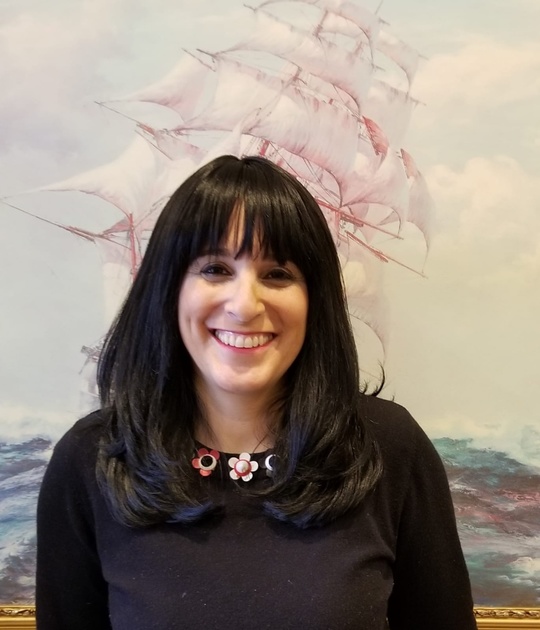
This is a series of columns depicting a fictionalized account of how a PPD case may manifest itself and be handled in therapy
Recap: In the previous session, Chava informs the therapist that her husband does not want her to return to therapy; and the therapist explores ways to bring husband on board to be supportive of therapy for post partum depression and anxiety; and uses psychoeducation to inform Chava about the possibility of using medication for symptoms.
Third session
Chava returns to therapy for a third session, and she looks better than I have seen her yet. Her eyes are more alert, and her mannerism more fluid rather than choppy.
When she enters the therapy room, she immediately says, “I told my husband I need therapy and gave him the information you gave me last session. I don’t know if he called any of those numbers, but I do know he looked up post partum online. He said I should do whatever I need to do in order to get better. My mother said the same thing. Maybe she spoke to him too. I don’t know.”
Chava does not say in words her relief at coming back to therapy, but it is evident in her body language and in the words she uses to describe her husband’s support, even if hesitant, in allowing her to continue.
At this time, I know I have accomplished three things: created a therapeutic alliance that will enable the therapy work to take root, given my client hope that change is possible, and completed an initial assessment in order to go forward (although there would be continual assessment throughout the duration of therapy). My task today would be to establish a plan for treatment. In the old days, when I worked as a new therapist in an agency, treatment plans were actually typed up in a formal document. As a private practitioner, I rarely create a paper plan; but simply help my client to identify what they want to accomplish in therapy and break down their goals into measurable bites so that they can see for themselves if therapy is helping. Depending on the client who expresses an interest, I will tell them the type of therapy I will do, and how long it will take. Otherwise, I will simply begin the work once we have established an oral plan of goals and expectations.
“Chava,” I say, “in three months from now, how will you know therapy has helped you?”
I phrase my question for goals in this way to sound more informal and less threatening, and also to let her know I am to be held accountable for helping her. Therapy is not some pie-in-the-sky magic that either works or is simply illusionary. It’s a skill and job that needs to show results.
Chava thinks.
I am silent while she formulates her thoughts.
Hesitantly, she begins. “I just want to feel better.”
I gently guide her to articulate goals and objectives that can be quantified more easily. “If you wake up feeling better one day,” I say, quoting back her words to her, “how will you know that you are feeling better?”
Chava thinks again.
“I will want to get out of bed. I will want to play with my baby. I won’t find it hard to get her dressed or change her or take her out to the park.” She thinks some more. “I will feel like I love her.”
Her goals all target her symptoms of depression.
I encourage her to think about her anxiety and how she will know she is better. “You mentioned that you are anxious all the time. What are you anxious about? How will you know your anxiety has decreased?”
She bursts out, “I won’t worry all the time!”
“About what? Can you think of something specific that you worry about since you have had the baby?”
Before she has time to respond, I realize that I have consistently referred to the baby, as the baby, as she has. As if the baby is this genderless, amorphous blob without an identity. “What’s your baby’s name?” I ask.
“Libby,” she says.
“Whose name is that?” I ask, and my question is not merely out of curiosity. I am wondering if calling the baby by name, and talking about her in therapy can make her seem more real and connected to her mother, my client.
I have hit the target.
“My grandmother,” Chava says. “She was niftar a few years ago and I gave the first name.”
I encourage some more talk about her grandmother, her baby’s namesake, and emphasize the positive feelings she has about her maternal grandmother and how according to many sources, a name is a zechus for the nifteres, and a mother uniquely knows what her baby’s name should be.
If Chava would have been unhappy about the name, or not have liked the namesake, I would have explored that avenue to determine its possible impact on post partum depressive feelings.
I steer our talk back to Chava’s goals in terms of her symptoms of anxiety.
“If I wouldn’t worry that I am a lousy mother,” Chava says, “then I would know that therapy is helping. “If I would be confident about myself as a mother—“
Again, I encourage Chava to identify a more measurable way of evaluating a decrease of anxiety rather than a general if-I-would-be-more-confident statement.
“I would know how to make her stop crying,” she confessed. “Stuff like that.”
Now that I have definitive goals, I lay them out for her. “You want to get out of bed easily, dress her, change her diaper, play with her, go to the park, and feel love for her. And know how to make her stop crying.”
“Yes.” Chava appears amazed that I have managed to condense all her problems into such manageable chunks that seem way less overwhelming stated in this way.
I give Chava her first homework assignment.
“Here’s what I want you to do,” I say. “In order for us to know if therapy is helping you, we need to establish a baseline of your functioning right now.”
She looks at me with a question mark in her expression.
“I will explain,” I say, reassuringly. I draw a chart that identifies each of the seven days of the week on one side. Then I write each of the seven targeted behaviors on large boxes going down another side. “Each day, write down how hard it is for you to do any of these things on a scale of 1 to 10 with 10 being the worst. If you don’t do any of these things, like going to the park, just leave it blank altogether and then we will know that you have not been able to even attempt it.”
Chava looks interested now. “I can do that,” she says.
I don’t know if she will do it, and although it will be very beneficial for her if she does it, the fact that her week will be spent thinking about the homework, building awareness of her actual functioning, can work almost just as well. And I tell her this in order she should not feel pressure to do anything. Part of her problem is that her depression makes her feel unable to accomplish tasks; I definitely don’t want to reinforce her feelings of inadequacy.
This piece of work targeting symptoms of depression and anxiety is behavioral. And the results are usually quite rapid. But I will not expect anything until she comes in the following week. I am prepared for anything and will not impose my optimism on her; she will report to me the next session, and we will go from there.
“How will this help me?” she asks. “You are not giving me anything to do to get better. It’s just a chart to show how badly I am doing.
Good question.
But our session is over, and what I tell her is this, “You are right. It’s only a baseline for your functioning. Based on this information, next week, we can begin the actual interventions to alleviate symptoms and improve daily functioning.”
But I don’t tell her a secret. Somehow this chart, without asking for change in functioning, usually creates behavior change anyway.
But because I do not want to impose my optimism on her, or to demand work she may not feel ready for, I lay low.
“Have a wonderful day,” I say.
She smiles a shy smile.
Her smile means, “I am feel safe and happy coming here, but I don’t feel comfortable telling you that yet.”
NOTE: Due to ethical and legal considerations, confidentiality is strictly upheld in social work practice; therefore this column articles depicting a therapy sessions is fiction. The characters and dialogue are solely imagined and not based on any clients so any similarities to anybody you know is purely coincidental. Although the information regarding post-partum is accurate, treatment in therapy may differ as it is individualized according the specific needs of each client, a therapist's orientation, and the unique relationship created in each therapeutic experience.
Look me up on LINKEDIN https://www.linkedin.com/in/mindy-blumenfeld-a8067583
Check out my book THERAPY SHMERAPY, available in bookstores and through Amazon
Browse through my previously published articles on my former blog Therapy Thinks and Thoughts at frumtherapist.com/profile/MindyBlumenfeldLCSW
Read current articles in my bi-weekly column THERAPY: A SNEAK PEEK INSIDE in Binah Magazine, available on newsstands every Monday.
 Previous
Previous

